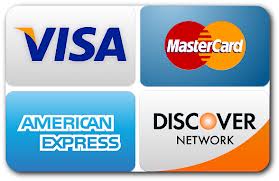Conquering Your Debt: Creating a Plan of Action (Part Two)

In my last few posts, I asked you to create several lists: Your Total Debt, Your Income, and Your Expenses. I also asked you to compare your total income to your total expenses to see whether or not you were operating in the red.
In order to tackle your debt, you need to do two things: 1) reduce your expenses and 2)increase your income. By reducing your expenses, you’ll be able to free up more money from your budget that can be put toward your debt. The same principle applies to increasing your income. The more money you bring in per month over your living expenses the more money you'll have to make extra payments toward your total debt.
The biggest problem with debt is the high interest rates and fees that come with it. Simply making the minimum payment per month isn’t enough. Each month that you carry a revolving balance on your debt forward is another month that your lenders will be able to charge you fees. In most cases, the minimum payment won’t be enough to cover the fees. In a sense, you’ll be simply “treading water” financially. You won’t be drowning, but you won’t be making any progress either.
Another way of looking at your debt is like a snowball rolling downhill. If you simply make the minimum payments each month then the ball keeps rolling and picking up more snow (in the form of interest fees, annual fees, etc.). The longer the ball keeps rolling, the bigger it'll get. I call it the Debt Snowball Effect.
The Debt Snowball Effect
Another way of looking at your debt is like a snowball rolling downhill. If you simply make the minimum payments each month then the ball keeps rolling and picking up more snow (in the form of interest fees, annual fees, etc.). The longer the ball keeps rolling, the bigger it'll get. I call it the Debt Snowball Effect.
Creating a Monthly Budget
I find that it helps to create a monthly budget-- and stick to it! Make sure that your budget is achievable with your current income. A budget that starts our in the red won’t do you any good.
Make sure that you include everything. If you don't then you might still be functioning in the red. This usually happens when people with good intentions create a budget but accidentally leave items off of the list. For instance, if you're in the habit of stopping by one of the coffee-shack drive-throughs on your way to work each morning then you need to remember to add the expense to your budget. Even if it's just a few dollars per day, it can add up fast. For instance, if you spend $5 per day times 5 days a week and four weeks a month... You get the idea!
Finally, and this is the part that I find the most difficult, in addition to making higher payments toward your debts each month you should also be putting some money aside in a savings account. This money is your “nest egg.” It’s the money that you fall back on when life throws you a curve ball— like your car battery dying without warning or hitting your foot on the coffee table while walking across the living room and accidentally breaking your little toe!
It's often the unexpected expenses that have the biggest impact on our financial health, so we need to do our best to be prepared for them.

Are you trying to get out of debt? If so, what kind of debt do you have?
Stay Tuned!
Now that we have a financial "plan of action," we'll talk about putting it to work in my next article. Stay tuned!









